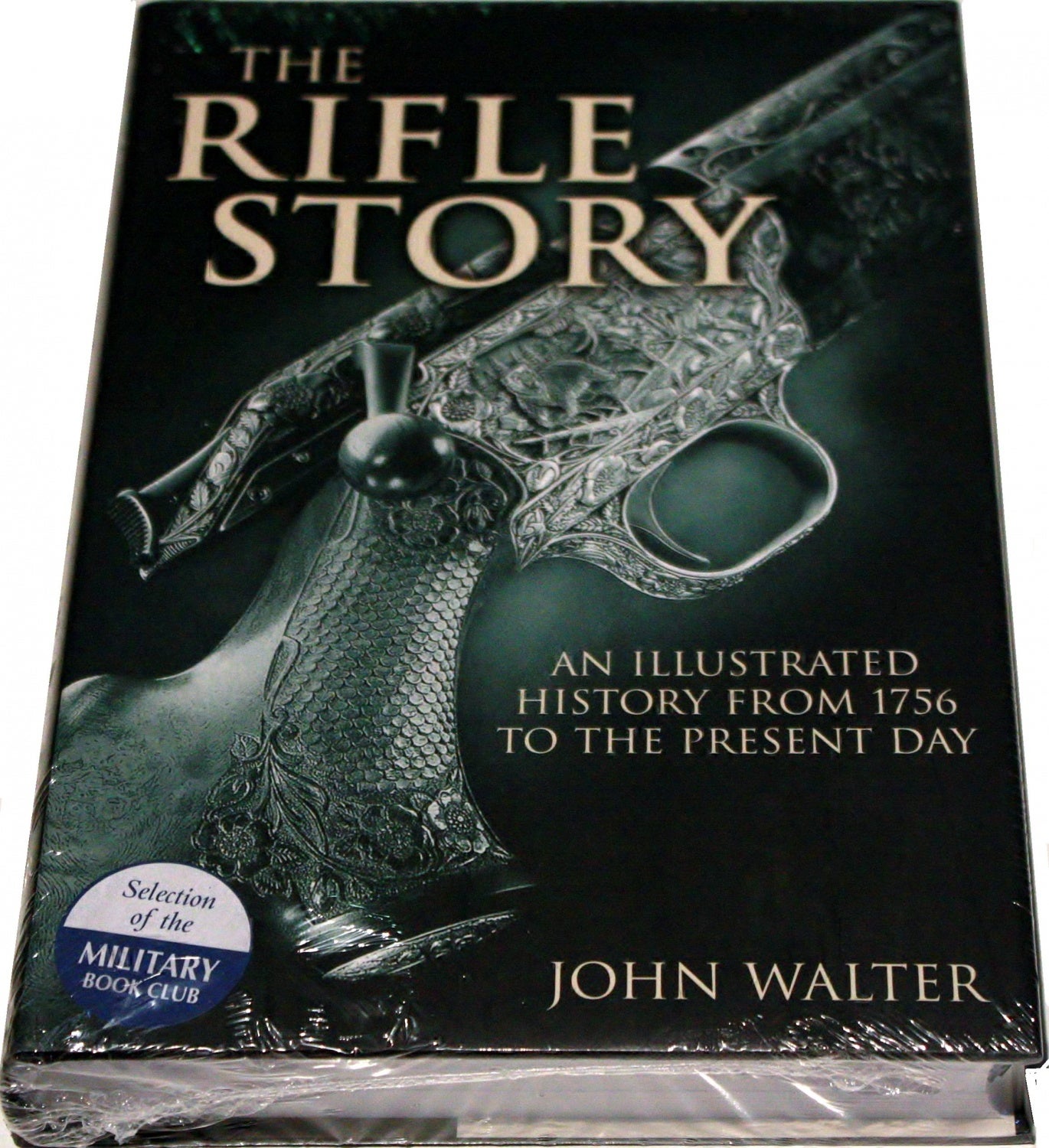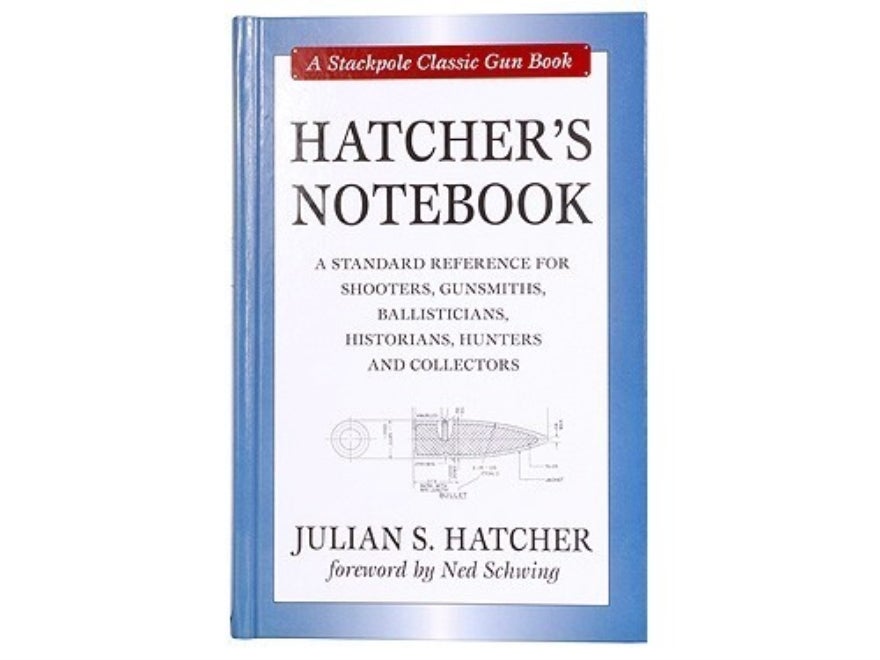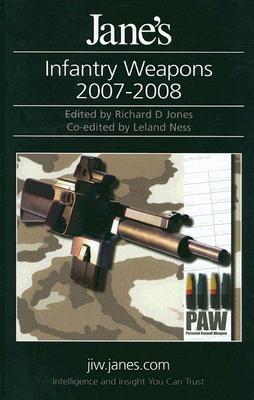Starting a firearms book collection isn’t for every shooter or firearms enthusiast. Not everyone reads a lot these days (offline that is), and the price alone is a strong deterrent. You can’t really attach the Collector Grade Publications “The Black Rifle II” to the rails of an AR, or jam Ian Skennerton’s “The Lee Enfield” into your No.4 Mk II. I recently went to some used book stores in Washington state and bought over 400 dollars worth of firearms books. With that amount of money I could have bought a good amount of ammunition, a scope, or even a decent hunting rifle. So I’m not amiss when I say this post isn’t for everyone. Another big thing is that a lot of the information I have in my firearms books can be found online through the internet. But if you have a good collection of books already, or want to get into collecting gun books, then read on!

A recent buying spree. The blanket, I swear, isn’t mine. In this day and age it is a great idea to compile a list of all your books so you don’t get duplicates. The World War One machine gun live fire book above the Flintlock book I already had. And I hadn’t realized it at the time, but the blue book above the WW1 is a book about Mannlicher rifles and pistols that is actually included in the top blue book.
Part of my fascination with books comes from my uncle who is a military aviation historian. Whenever I would visit him, we would go to all these used book stores and scour the shelves, him for aviation books and me for firearms. One thing that is great about collecting gun books is that they are a very niche market. So unless a book store is devoted to military history or firearms, it’s quite easy to walk into a bookstore and clean them out of their firearms section because usually all they’ll are maybe a handful. Nonetheless, I would recommend to still specialize in what you want because if you just go out and buy every gun book you find, you’ll never have a full library because your interests will be all over the place, just like with a decent firearms collection. For me, I’ve chosen to specialize in military small arms of the 20th and 21st centuries. Sure I’ve got a bunch of books on civilian firearms, a couple on hunting, some on long range accuracy but mainly I’m interested in the small arms, historical and present guns that arm the world’s militaries. But regardless of what you choose to specialize in, there are some general categories out there to know and understand.
Before we go any further, the need to seek out experts in the field of firearms is essential to any firearms book collector regardless of what the book is about. Some authors that stand out are Ian Hogg, Ian Skennerton, Bruce Canfield, Robert Bruce, Maxim Popenker, John Walter, Dolf Goldsmith, Anthony Williams, and Frank Iannamico are just but a few who are extremely well established. Buy a title written by any one of these guys and you can’t go wrong.
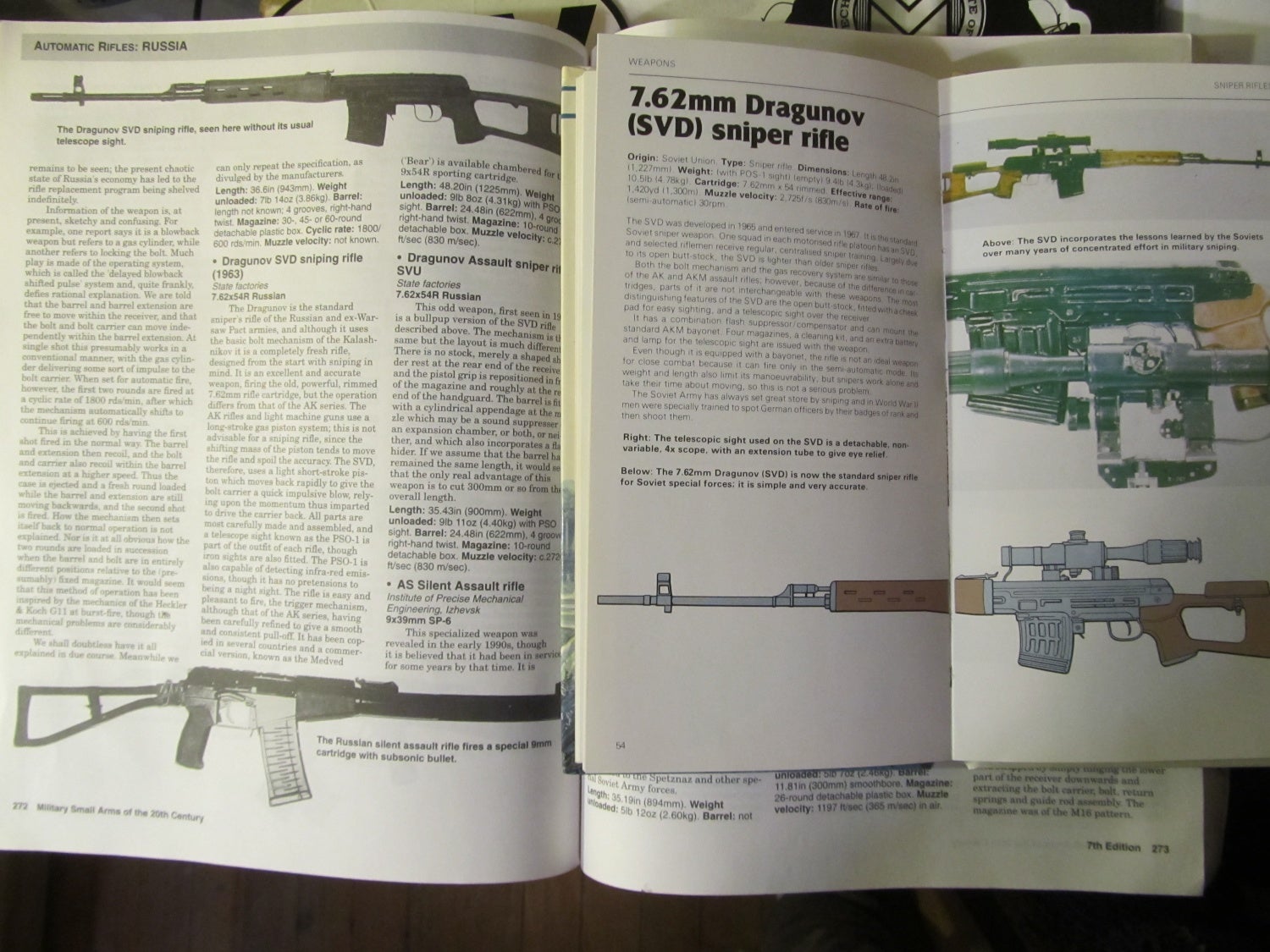
This is what I mean by regurgitating information. On the right is the “Weapons of the Special Forces” entry for the SVD sniper rifle, on the left is Hogg’s “Military Small Arms of the 20th century” entry for the exact same rifle. You’ll learn even more about the SVD and its variants from Hogg than from the special forces book.
I can’t name many bad gun writers but Patrick Sweeney is an example of a writer who’s books are written more like extended magazine articles. His opinions flood the pages and he sometimes goes off on a tangent on things that have nothing to do with the gun. For example in his Gun Digest book of the Glock, he spends an entire chapter on nothing but competitions. I’m sorry, but although I compete as well, I don’t want to read about competition in a book about the Glock pistol, I just want to read about the Glock. In addition I stay away from books that are politically charged such as anything from Wayne Lapierre (I won’t find serial number charts in Lapierre’s books about gun rights). There’s been a book written about Glock by Paul Barret and another one about the AK47 by Larry Kahaner and studying their political impacts. I’m not a sociologist, I don’t care how African nations benefitted from the AK in their struggles for independence. However I do care about knowing the difference between early AKMs and late production AKMs.
Reference Material
Reference publications are by far the most numerous out there but you have to pick wisely for this reason. Because they are easy to put together, lots of publishing firms will come out with reference books. An author doesn’t even need to be an established firearms authority to put a half way decent one together, all they have to do is look at previous reference books, add some relevant entries, maybe an introduction about how small arms affect this or that by an actual expert in the field and voila! Also, don’t buy too many reference books because before long, you’ll end up buying books that pretty much say the exact same thing about the same firearms, maybe with some additional pictures that you haven’t seen before but that’s about it. This is especially relevant with all these books coming out about the weapons of various Special Forces. The entries they have are the exact same and even less than the entries in general reference books.
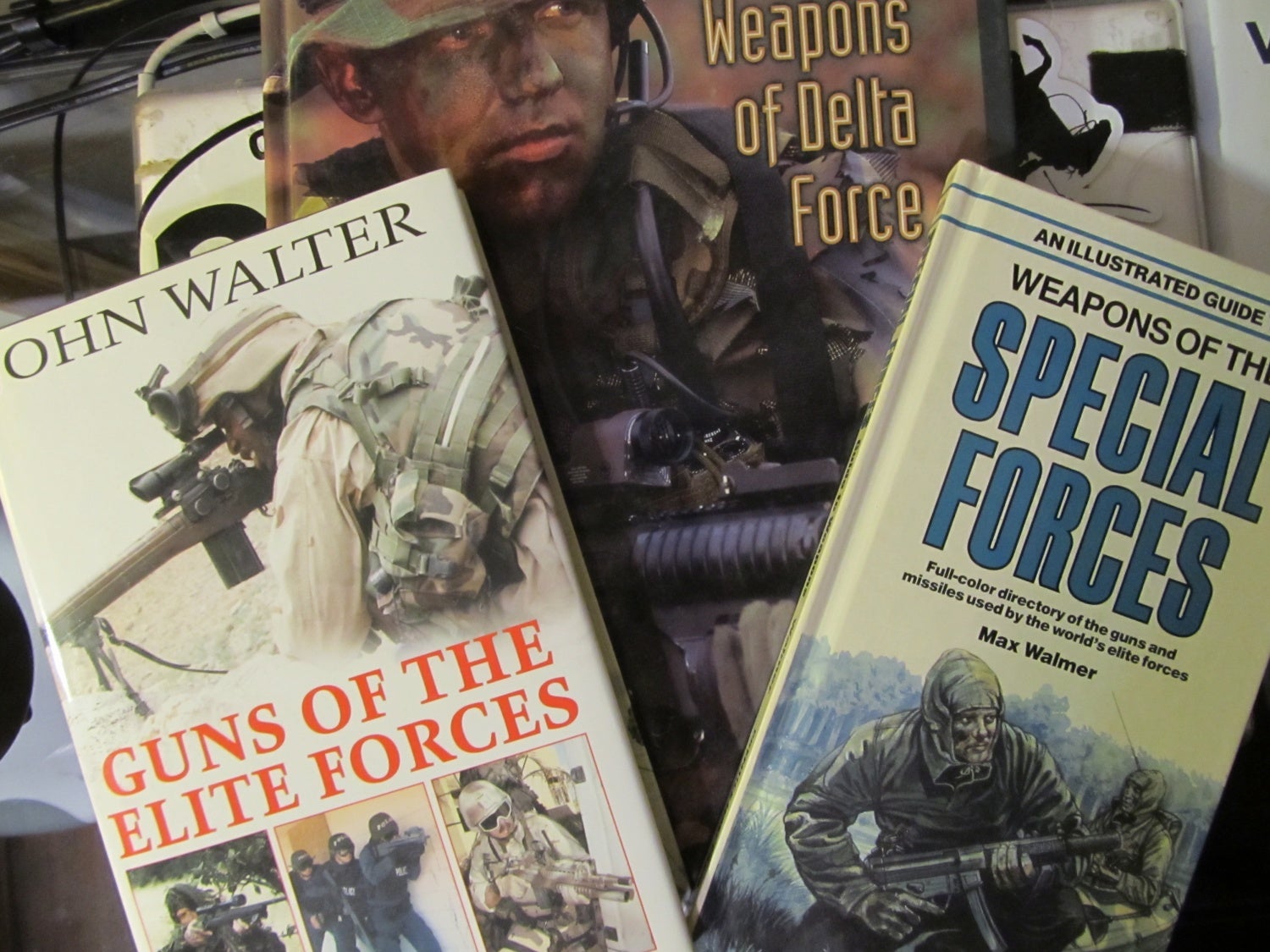
Don’t go for these books that are coming out about various Special Forces weapons. Most of the information is simply regurgitated from other actual reference books and these companies publish them to make a quick deal because they know the public loves anything to do with special operations. If you want to know what SEAL Team 6 is using right now, 1) you’re not going to know because most of it is classified and 2) get an actual book written by a former SEAL or similar capacity that might be from several years ago but it will go into far more detail than any of these authors can. The Weapons of Delta Force is especially horrible.
I would highly encourage reference books that are solely to do with certain eras or wars. For example I have general reference books about small arms as a whole but I also have reference books just dealing with World War Two British small arms and another one just on World War One machine guns. A perfect example of an excellent reference book is the Jane’s Infantry Weapons. You literally can’t get a better book of military small arms and their civilian derivatives. They come out with one every year, but they are extremely pricy, in the hundreds of dollars for the current year and years immediately previous to it. But, after a couple years their value plummets and you can find them at used book stores or online for under 50 dollars in most cases.

Reference books like the ones here that are just about small arms in World War Two, or just machine guns of World War One are quite good because they focus on a particular era and thus can cover much more about these weapons than a general reference book that is limited by space. Although the book “Guns in Combat” is very generic, my mother bought it for me when I was in elementary school, I began an interest in small arms, and haven’t looked back since. Much to her discontent.
Specific Firearms
These are the gold standards of book collecting, but only if they are of significant quality. I’ll look through a reference book for a gun I can’t identify, but I’ll open up one of these if I want to know about the different types of pins used in the 1903A4 rifle. You have to be weary about these books because some of them are more centered on disassembly/ reassembly and use of the firearm instead of being actually about the firearm’s history and variants itself. This example is shown through my sentence about Patrick Sweeney’s Gun Digest book about the Glock and Desert Publications is somewhat guilty of this. A company that specializes in these types of books are Collector Grade Publications out of Canada. They can sometimes be a bit pricy, but their books are some of the best books about individual small arms or series of small arms out there. Absolutely essential for collectors, they cover most everything you would need to look up about a specific firearm.
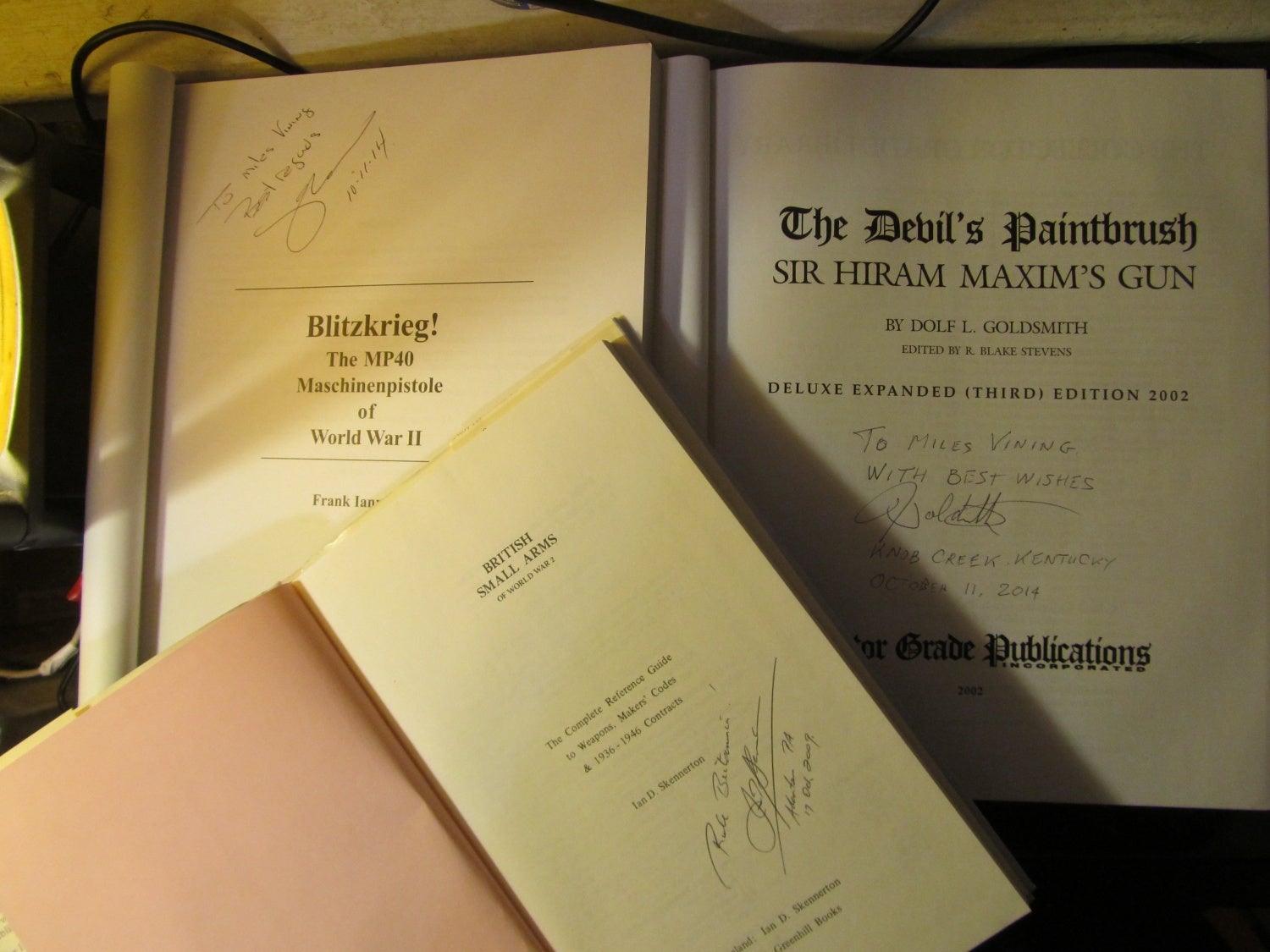
Autographed books are a great addition to the library, especially if they’re autographed to you and they increase in value if you ever want to sell them. Top left is from Frank Iannamico, right is from Dolf Goldsmith, and bottom is from Ian Skennerton. I actually met all these authors and bought their books from them at various gun shows, another great place to buy gun books. But usually someone selling gun books at a gun show will know their worth so you might have to pay full price, instead of finding them at a used book store where the owner might not anything about guns and put a lower price on them.
Field Manuals
These are great for collectors as they add to a firearms collection, especially when it comes to old firearms. You probably won’t buy them to actually consult and use, as there is far better information about actually using and maintaining firearms in civilian publishing. The older the manual, the more rare and coveted it is as well. The oldest field manual I have is a short pamphlet that was circulated in 1924 about the original 1911. The newest one I have is a printout from the Marine Corps about the M27. Be on the lookout for field manuals that get republished as these aren’t the original but they do add a wealth of knowledge to whatever weapon system you’re interested in. From a historical perspective, these publications allow us to look back and study the reasons behind the deployment or method used with the small arms being written about.
Company Publications
These are publications that are privately printed by their respective gun companies showing a history of the company and the various models and so forth. The advantage these books have are that they are often huge, filled with tons of never seen before pictures and material about the inner details of the company. The disadvantage is that they are very expensive as they are privately published, and they don’t offer that much to the collector because the main point of the book is to talk about the history of the company and not about individual differences between variations, serial numbers, and so forth. But either way, they are a great addition to a collection, especially if for example you really like Heckler & Koch stuff, then having the official company history is certainly a worthy addition. That’s the other important part about them is that they are the official histories so these books are the exact stances the companies took when dealing with their issues and so forth. But because of this, you most certainly won’t find much bad written about the company, even if it is the case. The books are also used for marketing so if you visit a big name gun company, you might get lucky and someone will give you a book as a gift instead of paying a hefty price.

I haven’t even taken the Holland & Holland book out of its plastic wrap. On a side note, that’s an artillery time fuse picked up in the Somme on the upper right.
Catalogs and other paraphernalia
Companies print tons of catalogs per year and many are often thrown out after a couple months or so because the next catalog makes the old one irrelevant with new products. But these are the stuff of history because they allow us to look back in time and see how a gun company was marketing its products and what features it was offering to the public. Knowing what features came out in what year allow us to better identify a firearm because the catalogs will tell us what the company had on for sale and with what features per year. Apart from catalogs, paraphernalia is also important. If you’re really into collecting all these gun books, then you’re probably also a student of history and things like pamphlets, targets, stickers or anything else become important as they give us a glimpse into the past. One of the best examples I have is of an A4 paper that was advertising a charity shoot done by the Estonians on Camp Leatherneck. ISAF has since left the base but this is a piece of firearms history now.

Two examples of badly written reference books. The book on the right is called “The complete encyclopedia of Automatic Army Rifles” with a picture of the VZ61 Scorpion on the front. I don’t know any person even with a passing knowledge of firearms that would classify the VZ61 as a “rifle”. In addition most of the entries are about sporting rifles that look military in nature and are arranged alphabetically. A proper reference book needs to be organized by type, and within that type by country. If you’re looking for a weapon that you don’t know, you pick out the type of classification it is, then search for pictures or descriptions that match what you’re looking for. On left is “The Greenhill Small Arms Data Book”, which hardly has any pictures and uses a truly confusing system of indexing entries. To add to that, it barely gives the entries any room for description so you learn nothing about a weapon system apart from maybe a few specifications. Surprisingly it’s written by Ian Hogg which is unlike his style.
Organization
There is no right or wrong way to organize a book collection. Each person has a different idea of what is the most efficient way to organize anything based on their specific needs. But I will go over how I personally organize my books. I have them by country, miscellaneous, general reference, specific reference, general study, field manuals, an encyclopedia of weapons and warfare, and finally anything to do with snipers and sniping. In the countries section, I have books about small arms from that specific country or of eras or wars to do with that country. There is alot of cross diversity though, as an example I have “Mauser military rifles of the world” in the Germany section because ultimately the Mauser is a German design and even though it was made and used by other countries, it goes back to the German design. “Firearms in the American West” is about an era of firearms so that goes in the American section. Also I’ve organized each section by timeline, for example Civil War stuff is at the beginning of the American section and M16 stuff at the front of it.
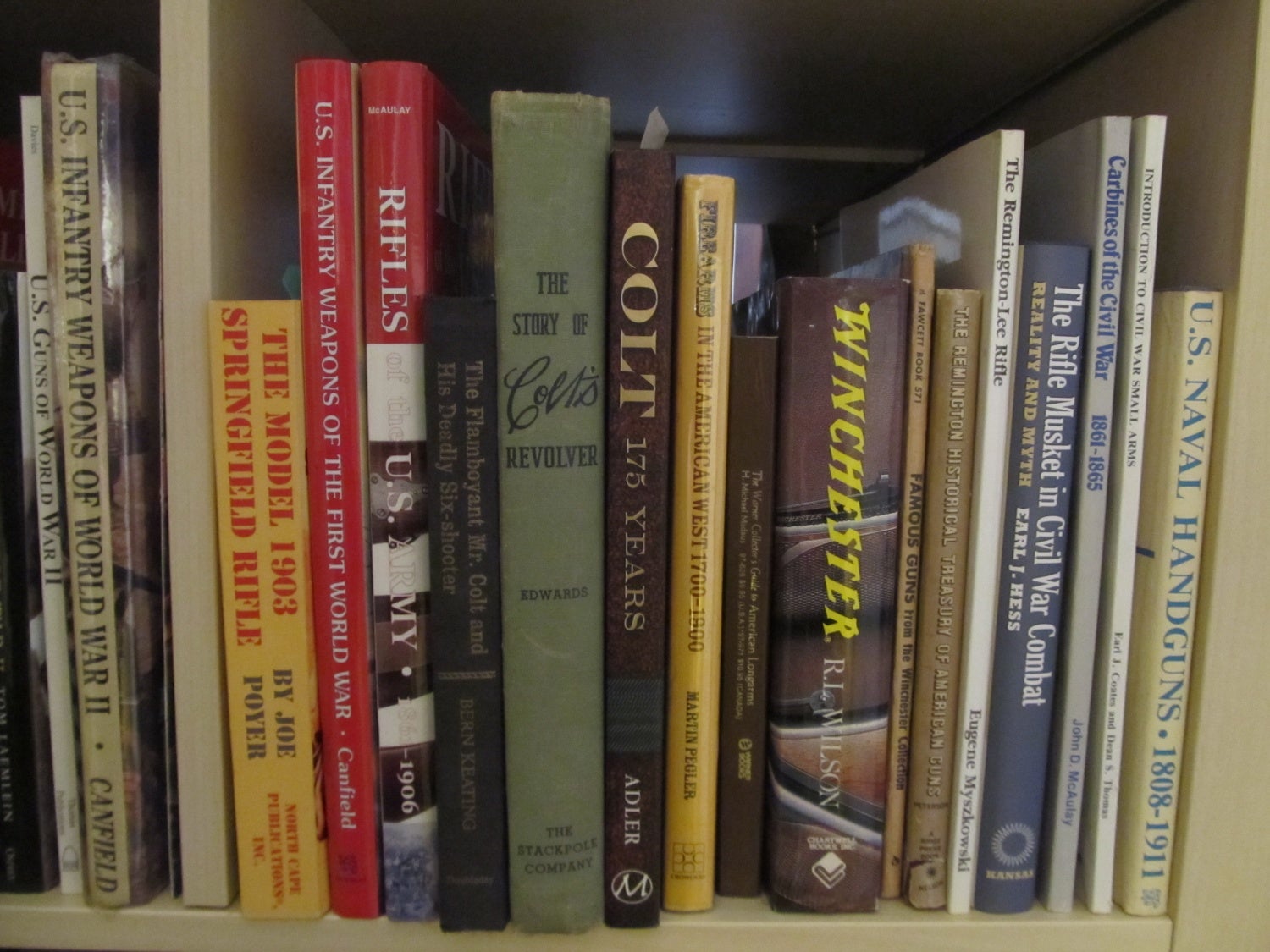
The “American” section of my library. As you broaden your collection, I think the best thing to do is to have diversity. I’ve got three books just on Colt, but only two on Remington so if I see a book on Colt and a book on Remington in the future, I’ll get the Remington one. Also I’ve got about 4 just on the M1 Garand, but none on the Thompson so I’ll get a Thompson book as opposed to a Garand one if it comes up.
So far my sections are thus: American, British, French, Italian, Austrian, German, Russian, and finally Japanese. I’ve got an identification manual that was initially published by the Army during World War Two, but then republished in the 1960s. Because it’s been republished and my Japanese section is lacking in material, I’ve put it in there. But that is an example the problems you run into when organizing books because it can go in the Japanese section or it can go in the field manual section. I’ve also got some Osprey’s and Ballentine War Series books on small arms but these go in my Osprey and Ballentine collections and not in the firearms section because I feel that to compliment the series, they belong with their other books.
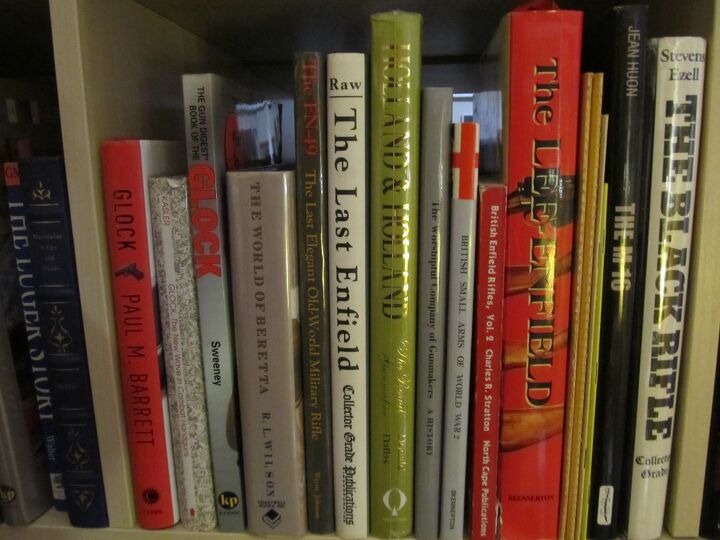
My British section is almost entirely by Ian Skennerton but that isn’t bad as he’s an outstanding author and expert on the Lee Enfield. But I don’t have anything on the FAL, Sterling, Webley, or the Sten. My Italian and French sections each only consist of one book apiece, so that needs to be put on the radar. Also of my three Glock books, probably only the middle one by Peter Kasler is actually truly authoritative. Sweeney’s is written like a magazine article and Barrett’s has nothing to do with actual gun but mostly the politics behind it.
After countries I have my miscellaneous section which consists of books on ammunition, Silencer patents, bayonets and so forth. Then I’ve got general reference which are reference books on small arms as a whole. This is where my “Jane’s Infantry Weapons” and “Military small arms of the 20th century” go. After that I have specific reference books that cover just rifles, or just machine guns, organized by rifles, machine guns, submachine guns, shotguns, and then handguns. Then I’ve got general study which consists of books like “Hatchers Notebook”, “The Rifle Story”, and “The Flintlock”. In the field manual section it almost entirely American manuals (on the look out for other countries) organized by height. Then I’ve got the Weapons and Warfare series which is followed by all my books on other ground armament such as tanks, artillery and anti tank weapons.
Below these I have my gun magazines I’ve saved, catalogs, brochures, targets, and other material that has been compiled but not in book form. I’ve organized the sniper section by first general histories of sniping, then individual histories organized by time starting with Civil War snipers, then up to World War Two and unto todays conflicts.
Specific recommendations
Regardless of what your interests are, I’m going to list some really spectacular books that I have found are hallmarks of gun writing.
The Rifle Story by John Walter– Walter takes a superb look look at the history and development of the rifle, from flintlocks to modern day caseless ammunition experiments. The biggest takeaway I got from this is that firearms development works in a series of plateaus until the next innovation which changes everything, then it plateaus out for a while until the next major innovation. How these innovations come about is interconnected to other industries and inventions at the time. If you really look at all the attempts of innovation, you’ll see that there were certainly a lot of smart inventors who were trying to reach the same goal but were limited because of constraints on them. For example the switch from flintlock to percussion was only possible because of the discovery of fulminate by a monk in Scotland. There were a lot of people trying to find better ways to make the flintlock more efficient and faster in reloading (think Ferguson’s rifle) but they were constrained because of the limits of the technology. All of small arms history is akin to a staircase of development with each major innovation coming from another field being the catalyst for that next step up.
Hatcher’s Notebook– Julian S Hatcher was an Army general who didn’t contribute many designs or inventions but it was his foresight and thinking that helped radically usher in various weapons tests, training, and development. Remember this was the crucial point in time where machine guns were coming into use and no one really knew how to truly effectively employ them. Machine guns were initially treated as light artillery! This was somewhat due to their weight and low level of maneuverability but men like Julian Hatcher helped change that. In his book he talks about numerous issues with firearms. Edward Chinn is another man who was almost on the same level of Hatcher and published a number of books just to do with machine guns.
Jane’s Infantry Weapons– I feel like I’m beating a dead horse by this point, but the reference book is truly the gold standard of small arms reference publications. An advantage to getting the earlier year copies are that these copies have entries that have been removed as more small arms get invented and their entries are added. One note that must be added is that many of these military small arms reference books do not contain shotguns, they’re mostly just handguns, submachine guns, rifles, and machine guns. Jane’s also goes into mortars, grenades, ammunition, pyrotechnics, and anti tank weapons. Especially useful is their national inventories at the back of the book that list the standard service equipment of most modern militaries. The company has also put out a Gun Recognition Guide, but there is much less information than the annual book. This guide is meant more to be carried around and used mostly for identification purposes.
NRA Firearms Source Book– This book has really a bit of everything from early formulas for gun powder up to modern laws and how to transport firearms. This is especially useful because it covers every field and gives you a foundation for studying other topics in small arms.
Cartridges of the World– This is in the 13th edition now, but any edition is perfectly fine to have unless you absolutely need information on the latest cartridges out there. You won’t be able to reload from these books as they don’t have any complex diagrams of cartridges but it tells you the history and different uses of each one listed in addition to the different manufacturer loads listed. The book is especially useful if you come across an obscure round that you’ve never heard of or am looking at a firearm for a round you don’t know about.
The Blue Book of Gun values– Covers pricing and conditions of most civilian firearms in the United States. Although this entire database is now online so instead of buying the new book every year you can pay for a membership online and access the same information and more there.
Sources
Unfortunately there aren’t really any huge public libraries dedicated just to firearms but there are some sources out there worth mentioning.
The Institute of Military Technology- This was established by Reed Knight and is inside his Knight’s Armament Facility which unfortunately means you need special permission to even get into because it’s a DOD contractor. But there is apparently an effort to isolate the Institute of Military Technology from the manufacturing facility to make it a public entry facility. The collection of tanks and small arms there is absolutely staggering but Knight has a room there full of firearms books and I was happily surprised to see that some of the same books were in my collection as well. But, if you’re a serious firearms researcher, give them a call and they may be able to accommodate you on a case by case basis.
National Firearms Museum– Although the museum is public entry, the archives and library room upstairs is not and I’ve heard they’ve got a good small arms library. Well of course they do, it’s the NRA! When I took a tour of the museum with the curator, I even asked to go up there and wasn’t allowed because it wasn’t planned but I’m sure if you’re patient and contact the right people, you can gain access for research purposes.
The Royal Armouries in Leeds, UK- In the Royal Armouries archives room, they’ve got a good selection of small arms books and materials, but most of their library deals with medieval stuff. Once again, you can’t just waltz on in there, you have to call ahead and announce your research plans.
National Archives II- For those really intrepid researchers out there, go to the National Archives in College Park, MD. I was just there in December and plan to publish some posts about what I found, but there are a number of archives to do with weapon tests and evaluations, mostly during World War Two and beyond.
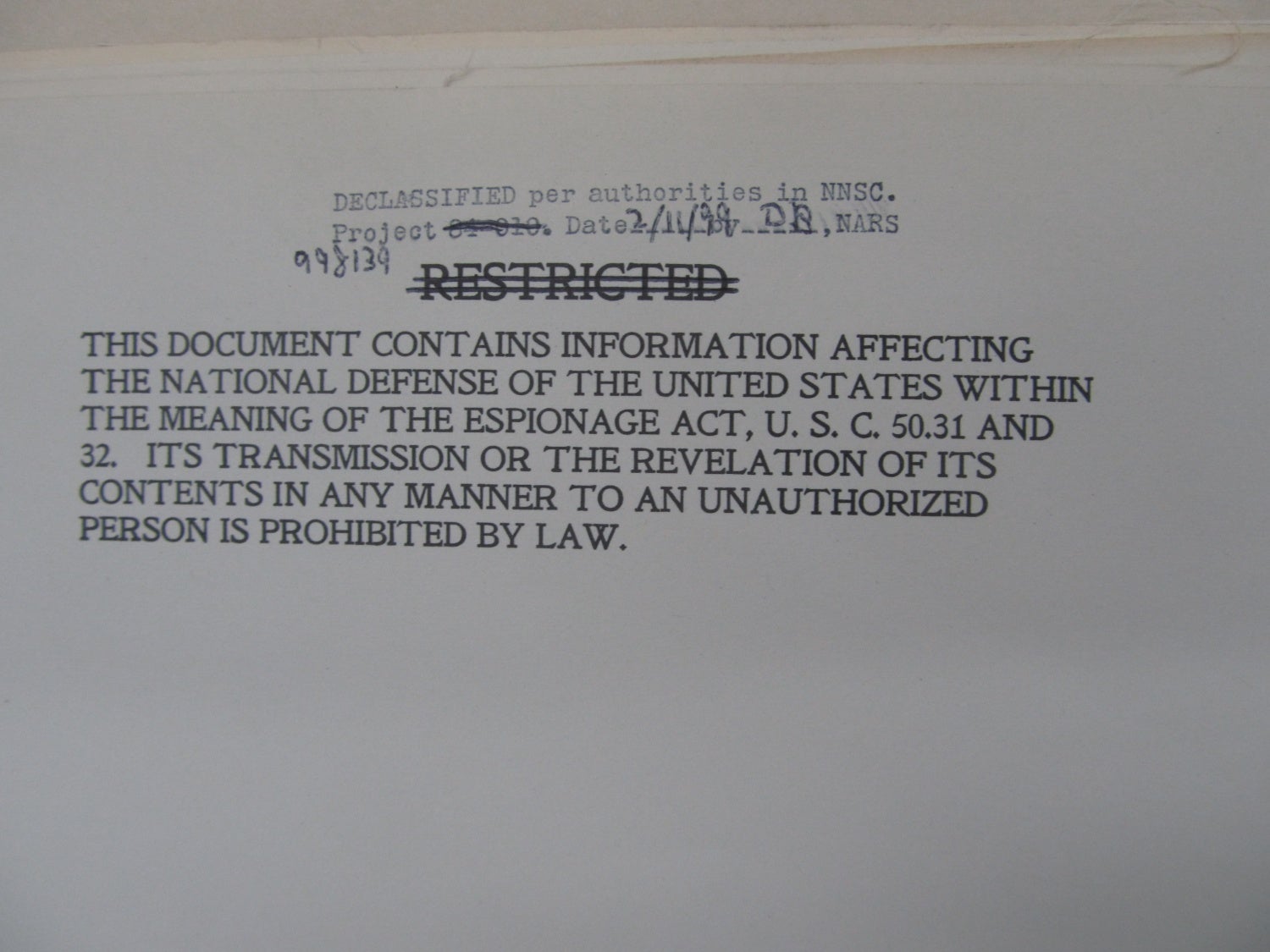
What would you think if you saw a diagram showing the various components of an AR rifle with this notice in the upper corner? That’s what this is equivalent to. It’s in the upper corner of a chart showing the components of an M1 Garand during World War Two. Image courtesy National Archives.
Forgotten Weapons- Ian over at Forgotten Weapons has an entire page of just firearms book reviews, so a great spot to really look into the books you’re interested in getting.
The Smithsonian Institute Archives- I’m mentioning this for the sole entry the archives have that has to do with small arms. It’s an 18 hour long series of videos of Edward Ezell interviewing Eugene Stoner and Mikhail Kalashnikov separately over their designs, culminating with the two being interviewed together over their weapons and eventually firing each others weapons in Virginia in 1990. If you’re in the DC area, I highly recommend going into the Smithsonian Archives floor in the Washington Galleries West building situated at the L’Enfant Plaza Metro stop on the yellow line (you don’t need any credentials as a researcher, just call in advance and bring proper identification). It’s been digitized into DVD format and you can watch it right there in the building.
 Your Privacy Choices
Your Privacy Choices


